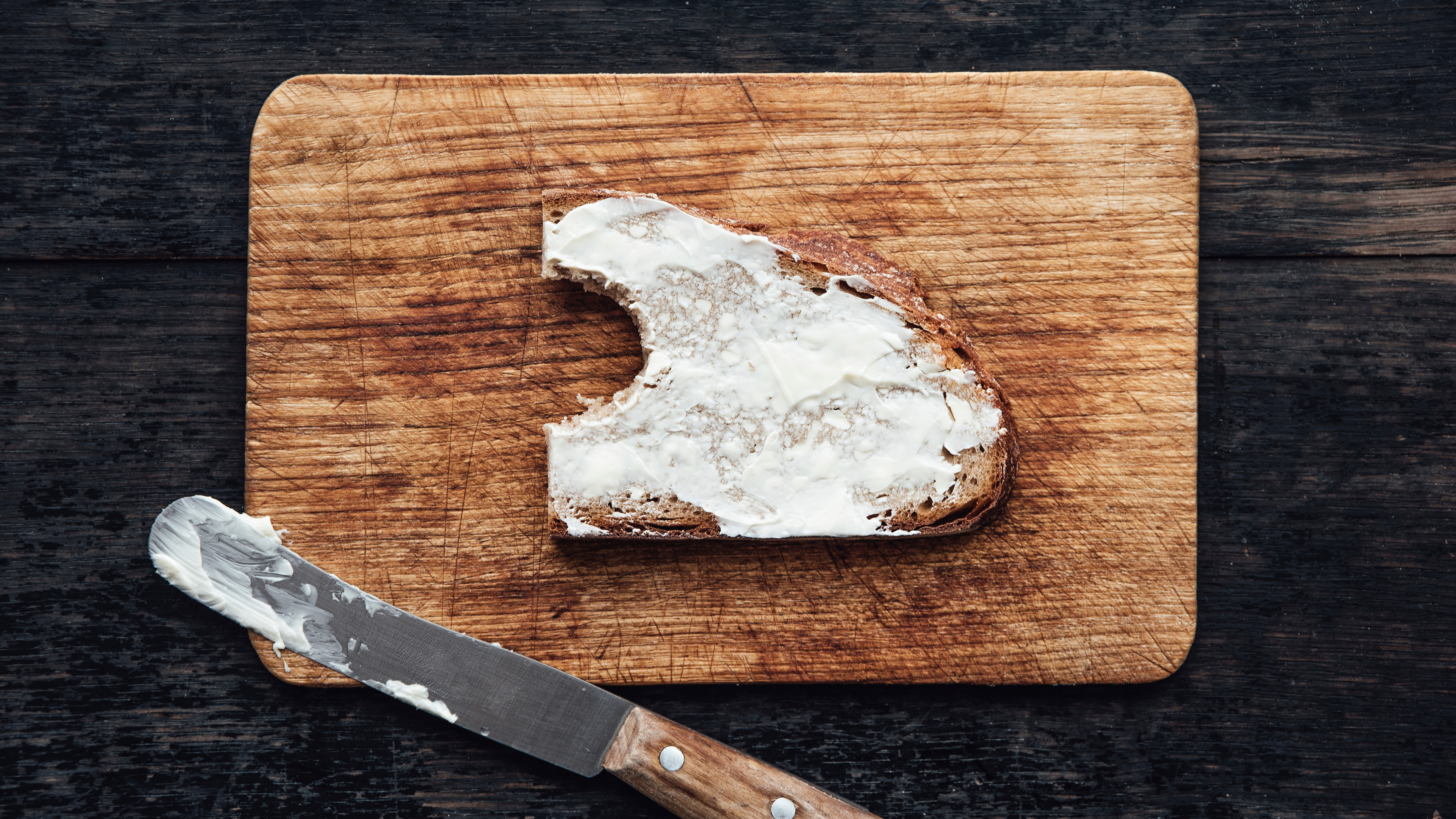The Fastest Way To Soften Butter
Thanks to a recent interest in baking sourdough bread, I'm flying through butter at an alarming rate. But try as I might to remember to leave some butter unrefrigerated, I'm usually staring at rock-hard, refrigerated butter every time I want to spread some on a bread slice snack. Because I also don't have a microwave—I know, you think I'm Laura Ingalls Wilder now, don't you?—quickly softening up some butter that way isn't an option.
In search of an alternative for softening—not melting—butter fast, I came across myriad methods using rolling pins and water and double boilers and Ziploc and warm glasses. They all seemed to have their merits, but which would soft butter best, fastest? I put five recommended methods to the test:
- Pounding butter flat with a rolling pin
- Using a double boiler
- Submerging butter in a zip-top bag in hot water
- Submerging butter (no zip-top bag) in warm water
- Using a warm glass
For each test, I used two tablespoons from a refrigerated stick of unsalted butter. I timed how long each took to look reasonably soft, and then rated their spreadability on a scale from one (rock hard) to 10 (liquid). I was in search of a method that would most quickly and effectively soften my butter without totally melting it.
1. Pounding butter with a rolling pin
I love a good excuse to beat shit, so I tried this method first: I placed the butter in a Ziploc bag, pounded it with a rolling pin, and then left it out on the counter until it was no longer cold to the touch.Time: 20 seconds of smashing, 20 minutes of restingSpreadability: 7
2. Double boiler
This is the same method I'd use to actually melt butter, but I took the butter off the heat before it could liquify. I used a larger pot of water and a small pot containing the butter to make my stovetop double boiler.
Time: 5 minutesSpreadability: 6
3. Submerged in hot water (with Ziploc)
I filled a bowl with hot water, then placed a Ziploc bag with the butter inside into the bowl. Time: 1.5 minutes, at which point the butter began to meltSpreadability: 4. The inside was still hard while the outside was melted.
4. Submerged in warm water (no Ziploc)
I filled a bowl with warm water and dropped the butter directly in. The method I'd found courtesy of Mary Berry recommended leaving it there for 10 minutes, so that's what I followed. After 10 minutes, I drained the water.
Time: 10 minutesSpreadability: 8
5. Warm glass steam method
I'd seen this "hack" making the rounds online: Fill a glass with hot water and let it sit for one minute. Then, pour out the water and invert the glass over a pad of butter, waiting 1-2 minutes until it looks softened.
Time: 3.5 minutesSpreadability: 5. Only the outmost part was softened; should I have left it longer?
Winner: Submerging butter—no bag—in warm water.
This method won for the uniform spreadability of the butter and for the relative quickness with which it was accomplished. I was surprised by this, as I initially though this method would be weird—who wants wet butter? But the butter actually "dries" fairly quickly once you drain the water off, and I didn't notice any "soggy" effects of the once-submerged butter on my slice of sourdough bread. I think the Ziploc-submerging method could also work if the water wasn't quite as hot (as recommended) when the bag is dropped in. But going forward, I'll be dunking my butter in water bowls as I'm slicing a fresh loaf.
Do you have a genius butter-softening hack I didn't try? Leave it in the comments—but please, no blow torches.
